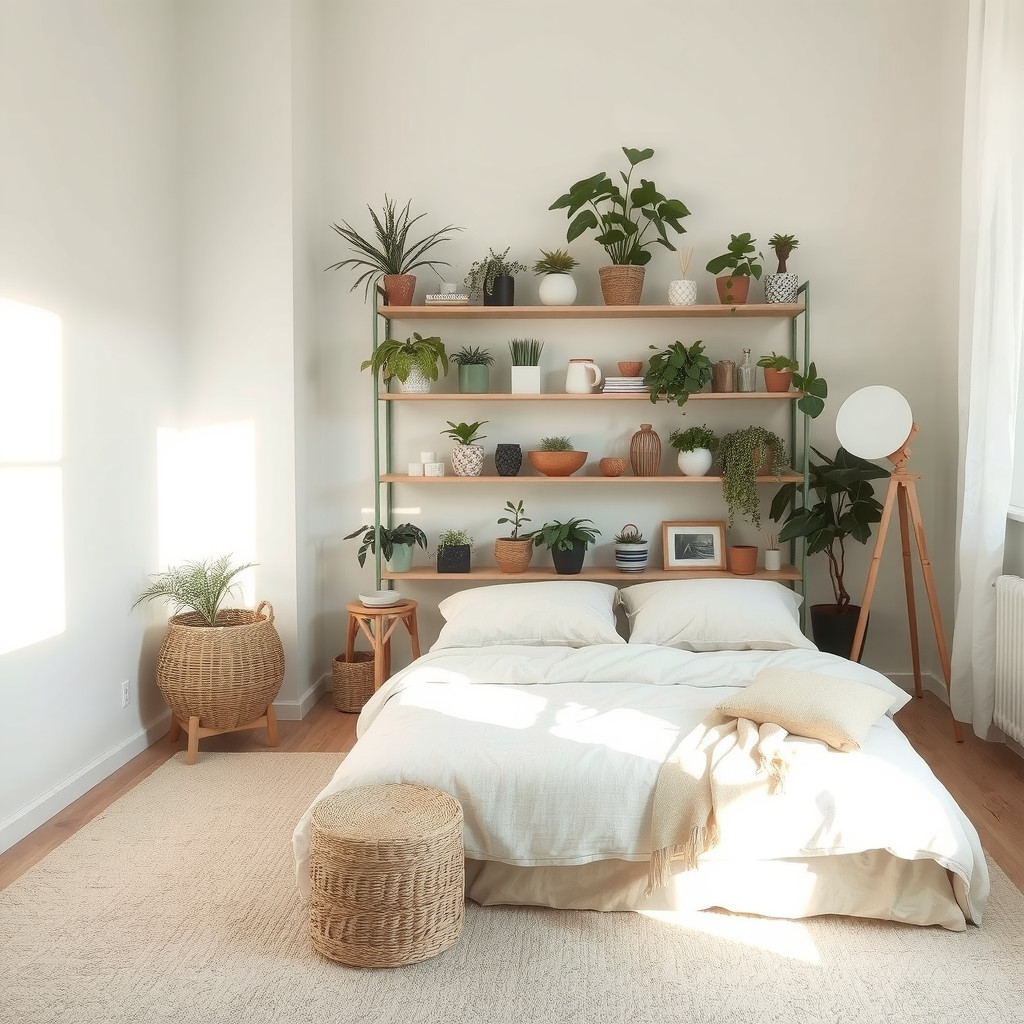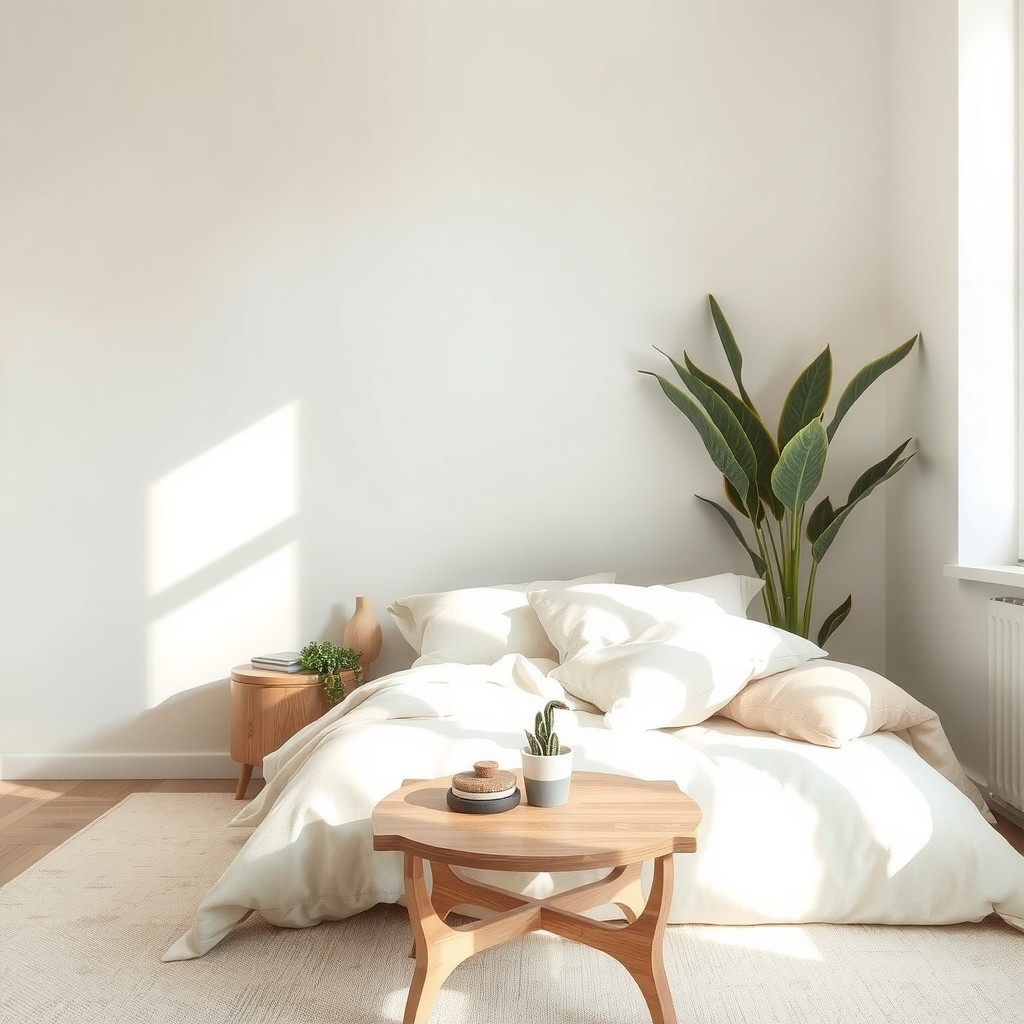ADVERTISEMENT
Introduction
Create a bedroom that leans on plants not as an afterthought but as an integral sleep tool. When you place the right greenery, you change the way a room breathes—visually and physically. Imagine a soft corner where trailing pothos filters the morning light and a sculptural snake plant anchors the bedside; that is the kind of sensory logic this guide will help you build. 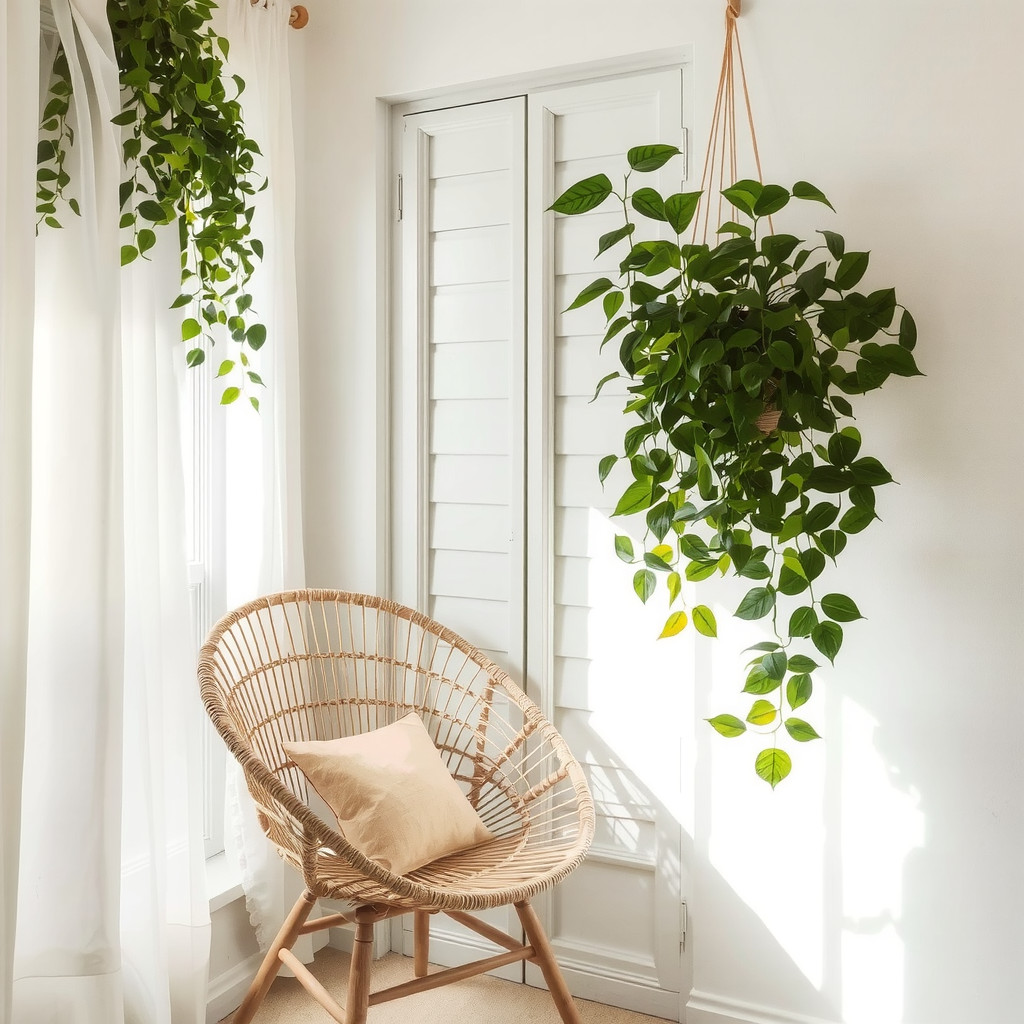
Layout and Positioning
Think of plants as furniture: they need balance and sightlines. Place taller pots where they won’t block windows but can still participate in air circulation—near the foot of the bed or a corner by the window. For a small room, cluster three plants of varying heights to read as one object; this makes the space feel intentional rather than cluttered. The image above shows a curtained window corner with a rattan chair and hanging pothos that softens the sightline while keeping floor space open. 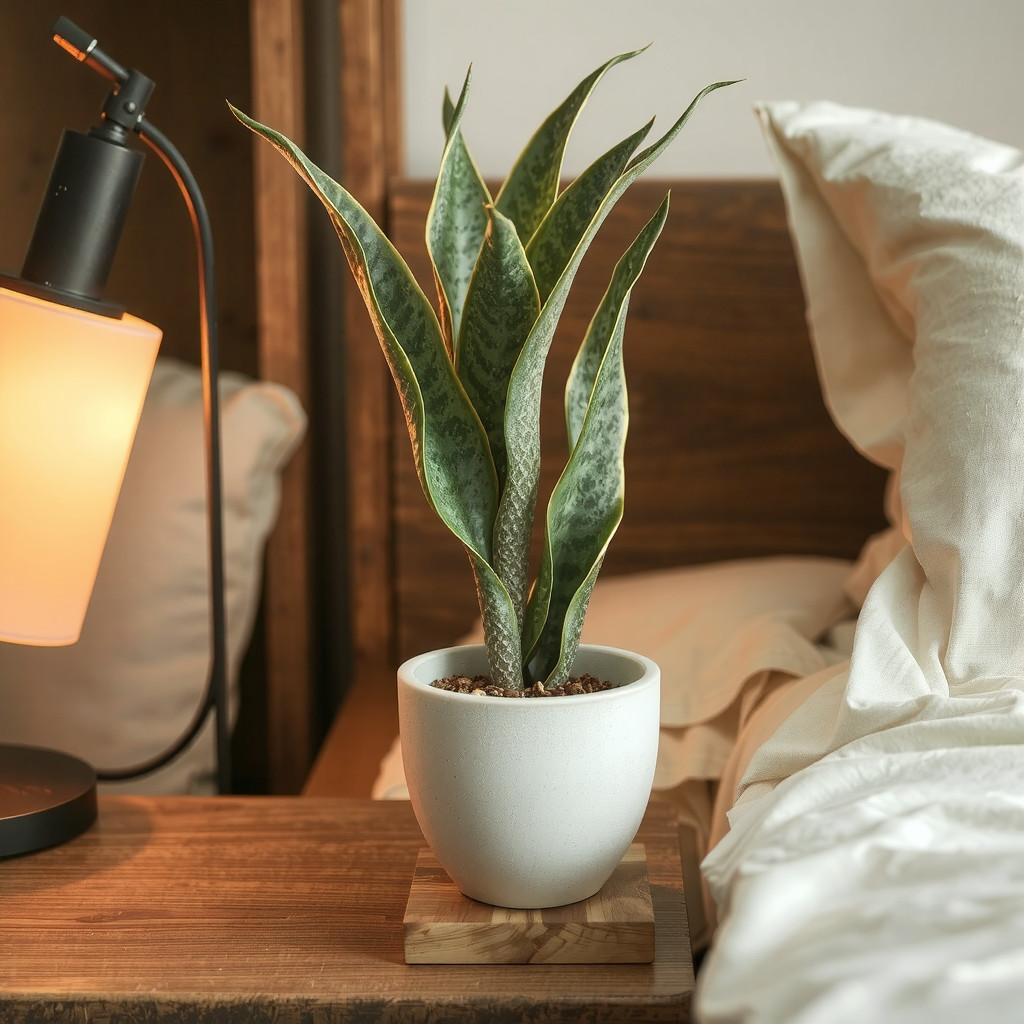
Materials and Textiles
Plants pair beautifully with natural materials: linen, raw wood, terracotta and jute. These textures amplify the calming effect plants provide and prevent the room from feeling sterile. Use breathable linen bedding and a woven rug to anchor pots—materials buffer humidity and create pleasant contrasts. The bedside vignette here pairs a ceramic pot and linen throw for a tactile, sleep-ready surface. 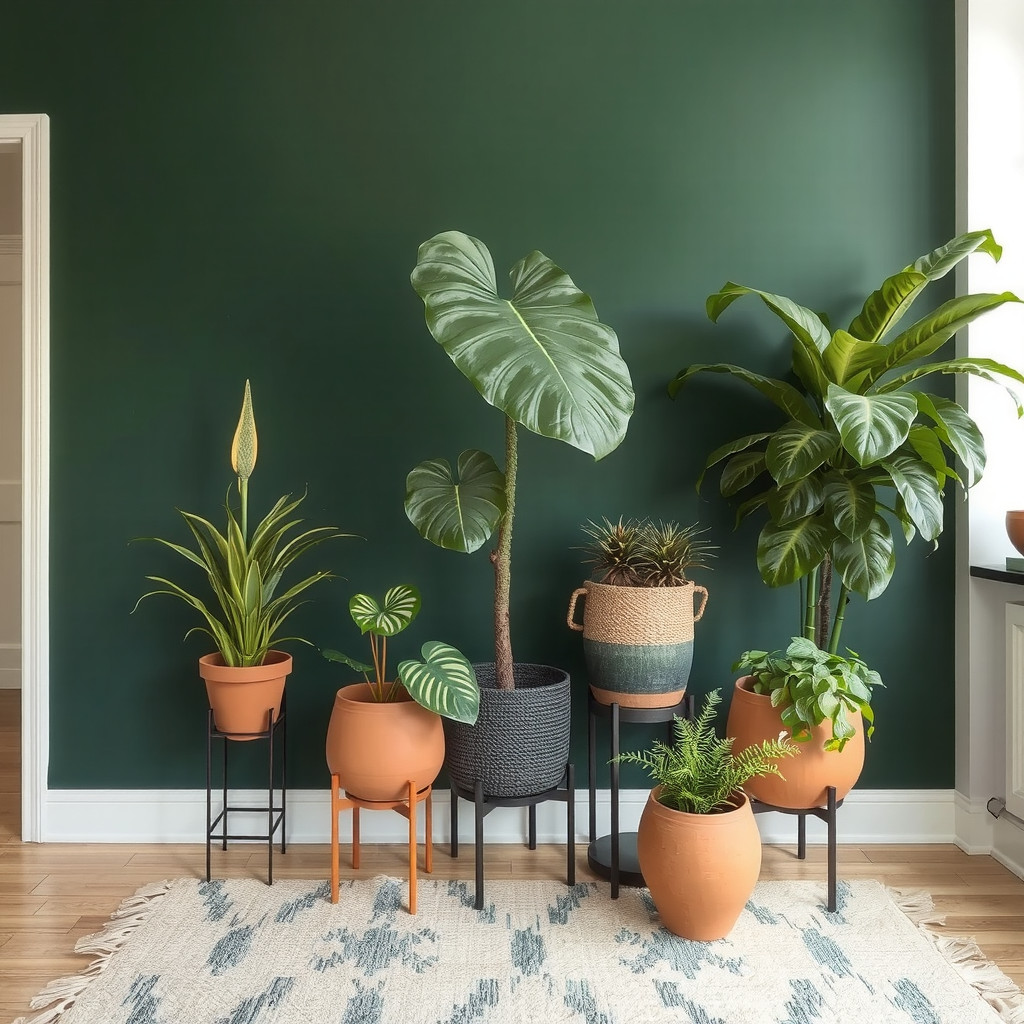
Focal Points
Choose one plant as your centerpiece—a sculptural monstera, a tall areca, or a grouped stand of snake plants. Position it where it can be seen the moment you enter, giving the room a calming focal rhythm. A deliberate focal plant reinforces the room’s purpose: rest. The image illustrates a deep-green accent wall framing a dramatic monsterascape that draws the eye without overstimulating. 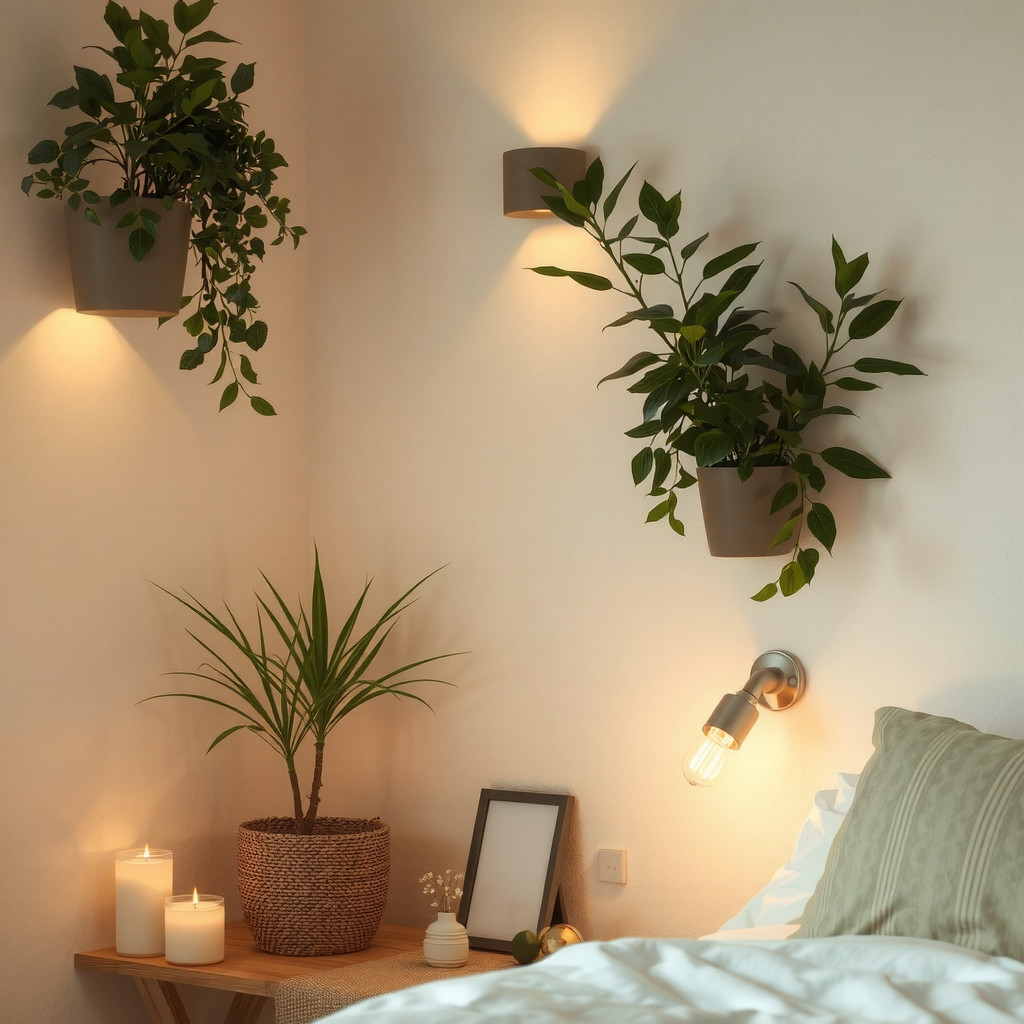
Lighting
Plants sleep too. Match the plant needs to the bedroom’s light: low-light lovers like snake plants and ZZs by dim windows; brighter spots for peace lilies or spider plants. Use warm, dimmable lighting for evenings so plants and shadows feel gentle—avoid harsh overhead light after sunset. The photo displays layered bedside lighting that sculpts soft shadows and keeps evenings restorative. 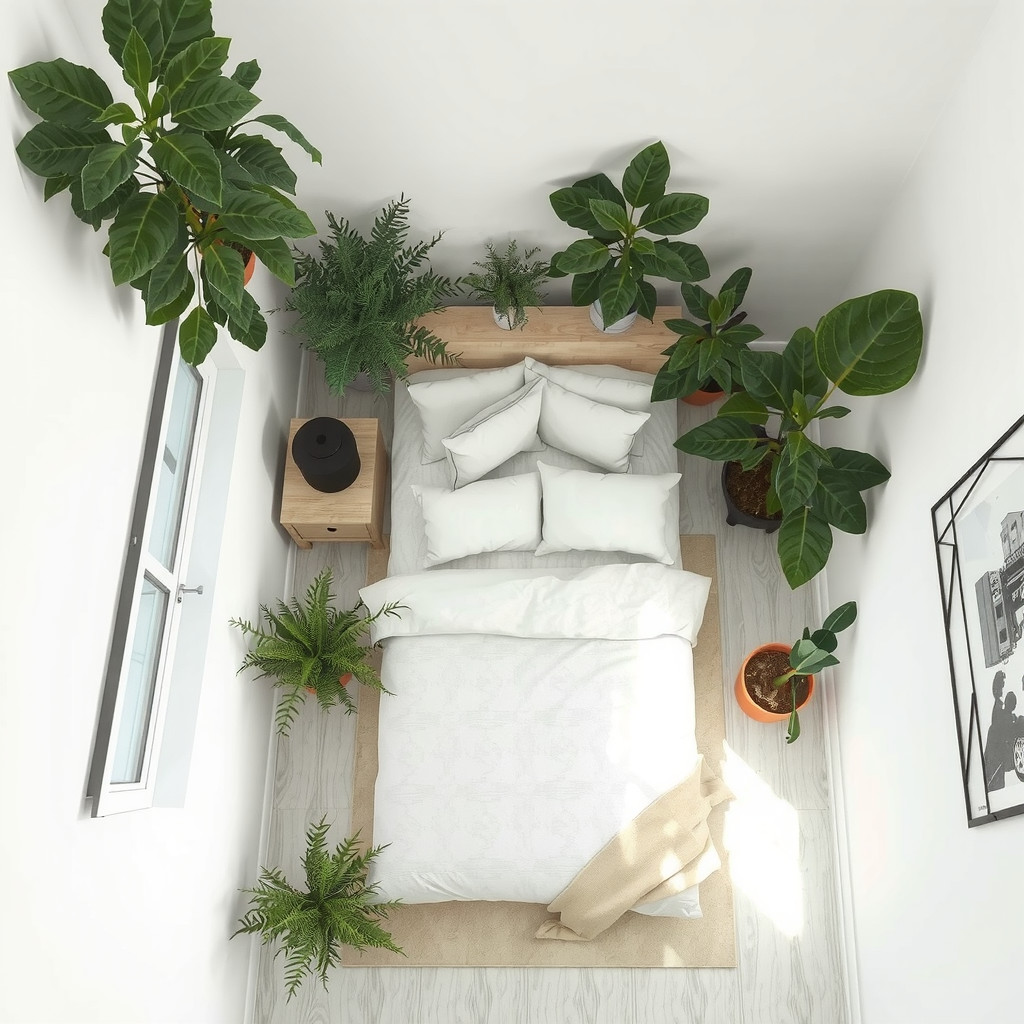
Greenery
Choose easy-care species that improve air quality and tolerate your routine: snake plant, pothos, ZZ plant, spider plant, and peace lily. Rotate plants occasionally so all sides receive light, and choose breathable pots with drainage to avoid dampness that disrupts sleep. The overhead shot shows strategic placement that supports airflow and maintenance ease.
Tips
- Choose resilient species that match your bedroom’s light.
- Group pots to create visual calm and simplify watering.
- Use natural materials—terracotta and linen—to harmonize humidity.
- Keep the tallest plants off the immediate bedside for safety.
- Dim lights in the evening and avoid bright grow lights after sunset.
- Rotate and dust leaves monthly to maximize breathing benefits.
With simple placement and a few well-chosen species, your bedroom can become a quiet, plant-led retreat that helps you sleep deeper and wake calmer.
ADVERTISEMENT
